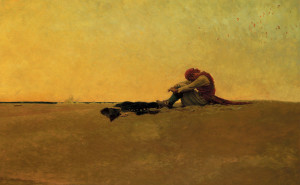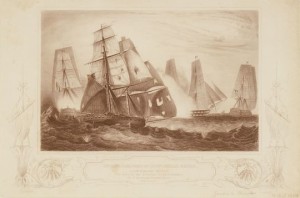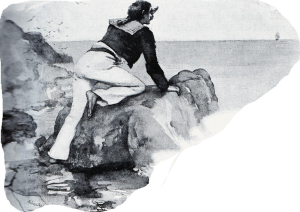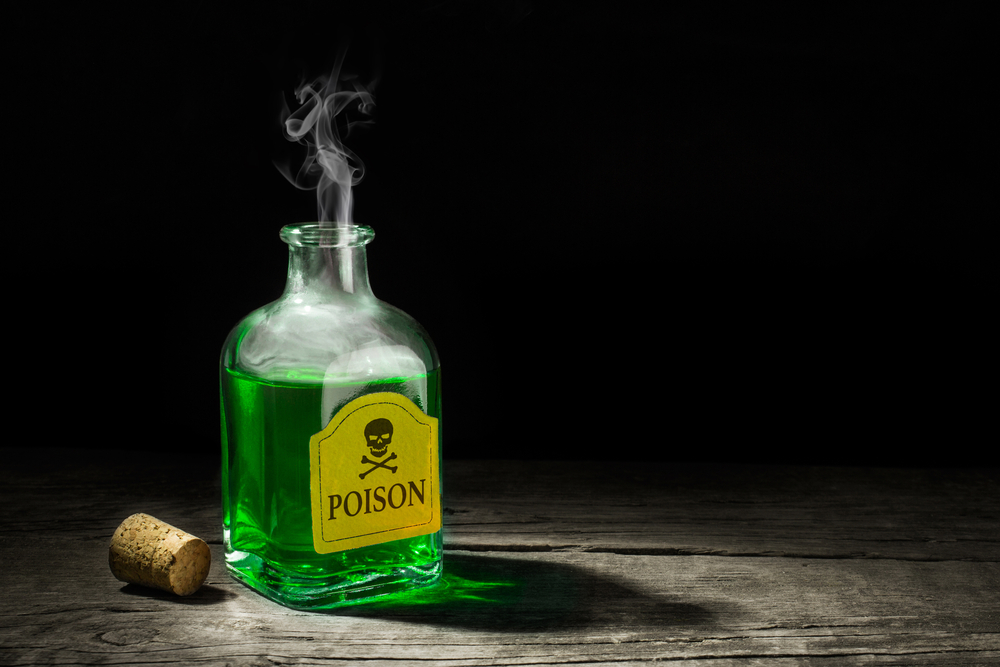
Marooning – the act of intentionally leaving a sailor behind on a deserted island or sandbar – is a punishment we traditionally associate with pirates. Even outside the world of piracy, captains occasionally marooned sailors as punishment for mutiny.
But what about as a punishment for stealing beer? On an island devoid of fresh water? That happened once in the British Royal Navy. This reblog from Antoine Vanner draws back the curtains on one of the most scandalous true crimes of maritime history. It also tells a miracle of survival. A big thank you to Mr. Vanner for letting me borrow from his blog, The Dawlish Chronicles.
A Marooning Scandal in the Royal Navy, 1807
One tends to think of “marooning” – abandoning a seaman alone on an uninhabited island – as being a punishment associated with buccaneers and pirates in the late 17th and early 18th Centuries. It is therefore somewhat of a shock that what was probably the last instance of such retribution occurred in the Royal Navy as late as 1807. The story is a fascinating one and it underlines just how omnipotent and capricious a captain could be in the days before radio once his ship had disappeared over the horizon.

HMS Recruit was a 100-ft long brig-sloop of the Cruizer class, of which 110 examples were built for the Royal Navy between 1797 and 1815. Small as they were, they carried a very heavy armament – two 6-pounder bow chasers and no less than sixteen 32-pounder carronades. At short ranges the carronades gave the Cruizers a nominal broadside weight greater than that of a 36-gun 18-pounder frigate. The advantage of the design was that the two-masted rig and the use of carronades, with their small gun crews, allowed this to be achieved with a crew one third the size of a frigate’s. These vessels were to see very active service.
Commander Warwick Lake presses a blacksmith into service
The Cruizer design was already a proven one when the newly commissioned Recruit headed for the West Indies in July 1807. Her captain was the 24-year old Commander Warwick Lake, later to be 3rd Viscount Lake (1783–1848). In view of what was to follow one wonders if he was not influenced by the example of his grandfather, General Gerard Lake, 1st Viscount Lake (1744 – 1808) whose suppression of rebellion in Ireland in 1798 was to be marked by extreme brutality. This reached a climax in the defeat of the rebel army at Vinegar Hill, County Wexford, and brought him into conflict with the Lord Lieutenant of Ireland, Lord Cornwallis (of Yorktown fame) who instituted an amnesty to encourage rebels to lay down their arms.
On taking the Recruit to sea Lake encountered a problem common to most captains of his time – shortage of men. He solved the problem by putting in at the Cornish harbour of Falmouth and boarding the privateer Lord Nelson, despite her being under protection of latters of marque. Several men and boys of the privateer’s crew were pressed, among them a blacksmith called Robert Jeffrey, whose trade made him especially valuable at sea.
The blacksmith steals some beer
Lake, according to one account “profligate and reckless”, now headed for the West Indies and by November was cruising in the Caribbean. Water was in short supply, and according to Lake’s later account Jeffrey stole some rum in a bottle from the gunner’s cabin. It’s not obvious that this offence was followed up but Jeffrey was to admit that on December 10th he drew off two quarts of beer from a cask intended for the captain’s personal use. A shipmate informed on him and Jeffrey was placed on a “black list”.

Three days later the Recruit was passing the island of uninhabited island of Sombrero, the northernmost island of the Lesser Antilles. It is tiny – little over a mile long and a quarter wide and only 94 acres in area – and is devoid of water. Commander Lake came on deck after dinner – apparently under the influence of drink – and decided that he now had an opportunity to punish Jeffrey. He is reported to have said “Lieutenant Mould! Do you see that rock? Lower the boat instantly. I’ll have no thieves on board my ship! Man a boat and set the rascal on shore!”
Marooning of the blacksmith
Jeffrey was now taken to the island in the clothes he stood up in, but without shoes, food or water. Seeing that his feet were being cut by the rock Lieutenant Mould gave him a pair of shoes ,together with a knife and a handkerchief donated by a midshipman. Mould seems to have delayed, in the hope that Lake would change his mind but in the end had to return to the ship, leaving Jeffrey stranded.

The Recruit now headed for Barbados to join the squadron there under Admiral Sir Thomas Cochrane. The story of the marooning began to leak out, causing general outrage, and Lake was ordered to explain himself. Cochrane, enraged, reprimanded Lake for brutality and ordered him back to Sombrero with the Recruit to find Jeffrey. On landing, no sign of him was found other than a pair of trousers – apparently not Jeffrey’s – and a tomahawk (a common boarding weapon). When the Recruit returned empty-handed the Admiral assumed that Jeffrey had been picked up by a passing ship.
Anger was widespread when the story reached Britain and Lake was court-martialled on board HMS Gladiator in Portsmouth in February 1810. Despite an attempt to pass some of the blame to his lieutenants the court found him guilty and dismissed him from the navy.
A miracle of survival
Jeffrey’s whereabouts were now the subject of impassioned interest, questions being asked in the House of Commons and the Government kept under pressure on the case. It finally emerged that he was in the Beverley and Marblehead area in Massachusetts and a ship was sent to bring him back, arriving in Portsmouth shortly after Lake’s court martial. Jeffrey had survived nine days on the rock, in extreme privation, before a passing ship, the American Adams, had spotted him. He had been unable to kill any of the abundant sea birds (the rock was later mined for guano) and he had been saved from death by thirst by a rain shower, having sucked up water from crevices through a quill.
Consequences of the marooning
Jeffrey – who had been unlawfully pressed in the first place, was discharged from the navy, was given his arrears of pay and was taken to his home at Polperro by a naval officer. The entire community turned out to welcome him and an eyewitness reported that “the meeting between the mother and her son was extremely affecting and impassioned.” He accepted a payment of from Lake of £600 – a fortune in those days, when a domestic servant might earn £10 per year – on condition that he would not press legal action against him. He told his story in London theatres and thereafter bought a coasting schooner. He did not however prosper and he died young of consumption, leaving a wife and daughter in poverty.
If you want to read more about the HMS Recruit’s history, please visit Vanner’s site.
Do you think Lake’s punishment and his settlement with Jeffrey were appropriate? How would you punish a captain for marooning a sailor?




I feel Lake’s punishment was appropriate, as it took away his livelihood and position, punishing and shaming him for his abuse of Jeffrey. Certainly, Jeffrey’s compensation was more than appropriate, given that had had stolen the Captain’s beer. Pity that he died penniless and young. How would I have punished Lake? My first emotional response to acts of cruelty is to do unto them as they have done to another. But that’s an inhumane approach, of which no human being is deserving.
Thanks for commenting, Sarah. I agree that marooning Lake would have been too cruel of a punishment, but I also wonder if a monetary settlement and dismissal from the service were enough. Do you think some jail time would have been appropriate?
Yes, pity that Jeffrey died young. It makes me wonder if the physical stress of the marooning had anything to do with it.
Recently reading the book, Nelsons Navy I stumbled across this story which caught my curiosity. After reading many further accounts, I became curious what the long term effects on the life of Lake were but have found little. This is the first I’d seen of the fact he’d settled out of court with Jeffrey, and for quite a hefty sum, (Over 50K pounds in todays money).
What I have surmised having read that Lakes (assumedly former) friends had taken up a collection which they had presented to Jeffrey, and the fact this had created a national furor at the time was that the good viscount was publicly disgraced. In his circles reputation was everything. I’d have to speculate he was at least for a time, persona non grata. That said he did long outlive Jeffrey dying in 1848.
That’s interesting stuff, but I’m not knowledgable about the subject. This blog is a reblog from the Dawlish Chronicles by Antoine Vanner (link in my blog). Have you thought about running this past him? Thanks for commenting, though.